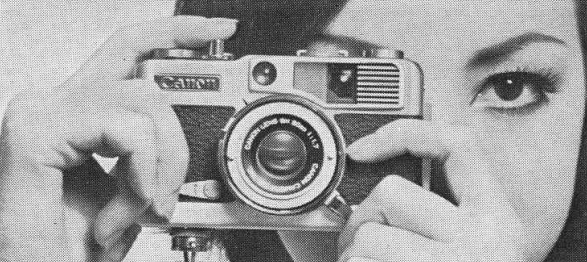When the Snow Comes, Kodakery, December 1918
 |
WHEN THE SNOW COMES
December, 1918
 |
| FLEECY SNOW OF EARLY WINTER Made with a 3A Folding Kodak on Kodak Film. Stop, 16; 1/25 sec. |
IN most of the landscape subjects we photograph during the summer months the foreground contains detail and the predominating tones of the ground are dark, but in winter, when the ground is covered with snow, the foreground is often wholly void of detail and it reflects almost as strong a light as that which comes from the sky.
A picture in which the foreground is a blank mass of white may represent a snow scene just as we saw it but when we examine such a picture we cannot but feel that it is pictorially unsatisfactory. By changing the foreground before the photograph is made we can add pictorial interest to the scene which will greatly improve the picture.
This can frequently be done on a sunny day by selecting a point of view from which the shadows of nearby objects will extend across the foreground, and it can always be done, whether the day is sunny or cloudy, by tramping through the snow so the foreground will show footprints or the lines of a path.
The snow that has been shoveled from roadways and walks and lies piled in hillocks or ridges will furnish interesting foreground detail when the lens faces the shadow side of the snow.
When a heavy thaw comes after a few inches of snow have fallen many a scene similar to the one shown above can be observed along the creeks. Pictures of this type are most easily obtained in early winter when the waterways are still open and the low growing vegetation has not yet been packed beneath the snow.
This picture was made at about 4 o’clock when the sun was diagonally in front of the camera. To prevent the sun from shining on the lens and fogging the film a note- book was held above and in front of the lens, outside its field of view, in such a position that it cast a shadow on the lens.
 |
TRIANON GARDENS, VERSAILLES
Made with a Premo on Film Pack Film. f.16; 1/4 sec.
|
In photographing snow scenes our aim should be to record all the tones that are reflected by the snow. This is why, when the sun is shining, it is usually best to photo against the light and expose for the foreground shadows on the snow. When this is done these shadows, and the tones that are lighter and also those that are darker than these shadows, can be recorded with an ordinary snap- shot exposure when a fixed focus camera is used, or with as second exposure through stop 16 when using a focusing camera.
Sunshine adds brilliancy to the lighting but it also increases contrast between the strongest lights and the deepest shadows, and when there is ample contrast in the subject the most pleasing pictures can frequently be obtained on cloudy- bright days.
When nearby dark objects which receive the light from the sky and the light reflected from the snow are photographed, softer effects can be obtained when it is cloudy- bright than when strong sunlight casts pronounced shadows. This is the reason why some photographers prefer to picture subjects similar to those shown on this and the page following when no sun shadows are visible.
 |
TRIANON GARDENS, VERSAILLES
Made with a Premo on Film Pack Film. f.22; 1/4 sec.
|
The pictures that are sure to awaken the pleasant memories in the years to come are those that remind us of our home and the familiar, everyday scenes and incidents of our home town. Winter scenes and winter pastimes differ from those of the summer months and it is only by picturing them that we can keep our records complete.
| 2020 | T C P | www.wideaperture.org |




